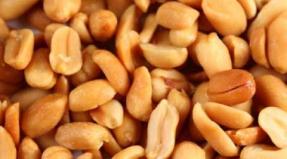Alcohol content in blood and breath. Alcohol calculator and blood alcohol tolerance values. Reasons affecting the concentration of alcohol
There is a so-called norm per mille of alcohol in the blood, having learned which, a person will understand whether he can get behind the wheel and at what stage of intoxication he is. The ppm unit measures the pure alcohol content of a person's blood after drinking. To determine its value, you can use special formulas and tables.
Drunkenness in ppm
The table by which you can determine the stage of intoxication in ppm should be used simultaneously with formulas that will help you independently calculate the content of pure alcohol in the blood after taking alcohol-containing drinks. When using the table, it should be borne in mind that the indicators are influenced by factors such as the age of the subject, his gender, general health, the presence or absence of chronic diseases.
Decoding the level of ppm in blood according to the table:

Signs of alcohol intoxication
When alcohol enters the bloodstream, certain signs are observed that may serve as a reason for sending, for example, a driver for a medical examination. These signs of alcohol intoxication include:
- A strong smell of alcohol comes from the person's mouth. Moreover, even the most powerful modern means cannot get rid of it, therefore, with such aromas, it is categorically not recommended to get behind the wheel.
- The posture of a person after drinking alcohol becomes unstable, and the gait becomes unsteady. This symptom is classified as movement coordination disorder.
- There is trembling of the upper limbs or only fingers on the hands.
- Neurological disorders are clearly visible - a person starts talking too loudly, his speech will be illegible. Drinking alcohol leads to an incorrect assessment of the environment, a person becomes aggressive, may demonstrate unnatural behavior.
Calculation of ppm blood alcohol
This value can be calculated using several formulas. It is important to remember that such a study can only determine the level of alcohol content, but not the time of drinking. Another important point: an equal volume of alcoholic beverages of different strengths will "give out" a different content of pure alcohol. For example, half a liter of vodka and the same amount of beer will give different results: in the first case, a person will have severe intoxication and alcohol poisoning, and in the second, a slight intoxication, which will pass in a couple of hours.

Formula Widmark
This formula is considered by far the most common and commonly used:
C \u003d A / m * r
C is the value of the total concentration of pure alcohol in the blood
A - the mass of alcohol, which is expressed in grams (it is imperative to convert the volume of alcohol consumed into mass)
M is the patient's total body weight (weight)
r is the Widmark coefficient: for women it is 0.6, and for men it is 0.7.
Note: if you want to calculate the total amount of alcohol. which was drunk the day before, then you should use the formula A \u003d s * m *r.
Formula Dubrovsky
You can determine the amount of alcohol in the blood and according to the data of the exhaled air, using the special Dubrovsky formula:
FROM air \u003d C eau * K1 * e ( K2 * T)
C eau - liquid, represents the level of alcohol concentration in the liquid
C air is the concentration of alcohol in exhaled vapors
K1 - value constant value equal to 0.04145
K2 is a constant value equal to 0.06583
K2 * T - special degree of the number "e"
T is the temperature value.
The formula is used only by specialists, but you can apply it yourself. For example, if the temperature of the exhaled vapor is 35 degrees, then the following value is obtained:
0.3 * 1/2100 \u003d 0.15 mg / l.
This calculation formula is applied when there is a breathalyzer of any type, from the simplest to complex devices that make it possible to obtain certain data.
Calculation without calculator
C \u003d A / (P * r) - b60 * T
С - alcohol concentration
A - the amount of alcohol drunk before in grams (the volume just needs to be multiplied by the density - 0.79384)
P - body weight
r is a unit of reduction that shows the proportion of alcohol entering the blood. For men and women, this value is different, for women it is 0.55, and for men - 0.68
b60 - the value of how much the concentration of alcohol decreases in 1 hour. It is at the level of 0.1-0.16 g / l
T is the time that has passed since drinking alcohol.
To make it clearer, here's an example of a simple calculation based on the following available data:
A \u003d 0.4 * 100 ml * 0.7484 \u003d 31.936 g
N \u003d 2 hours
r \u003d 0.68
P \u003d 80 kg
r \u003d 0.68
b60 \u003d 0.13.
The result will be the following answer: C \u003d 31.936 / (038 * 80) \u003d 0.3270588 ‰ or 0.33 ‰.This indicator per thousand means that the man is still in the stage of alcoholic intoxication, his reaction is slightly inhibited, and it is better for him not to drive.
The above tables for calculating ppm of alcohol in blood can also be used at home, this will help to determine in a disputable situation whether it is possible to drive a car. But you need to know the number of ppm that are allowed when driving a vehicle - this data will be individual for each country. In Russia, since 2013, the permissible level of alcohol while driving has been 0.16 ppm when exhaled and 0.35 in blood.
Alcoholic beverages are strong formulations, the use of which leads to the inevitable consequences of a hangover with a persistent smell. A small dose of alcohol helps, which the traffic police will recognize. For them, it is enough to conduct and establish the exact indicators of alcohol in the blood, which are expressed in ppm.
Find the answer
Is there a problem? Need more information?Type in the form and press Enter!
What is ppm
It is a unit of measure for alcohol in the blood and indicates the degree of intoxication. 0.045 mg of alcohol accounts for 0.1 ppm.
The indicator is set for public safety and for monitoring drivers on the roads.
It is easy to measure using specialized instrument methods.
Reasons affecting the concentration of alcohol
The devices measure the alcohol content and show the concentration of ethanol in ppm. To avoid troubles on the roads, drivers first need to know the norm of alcoholic beverages. This will allow you to control their use.
Bad smell is a consequence of the processing of ethanol in the body. The main part is excreted through the liver, a small part passes through the urinary tract and the remainder enters the lungs. Because of what it occurs when you exhale air vapor. Additional factors that can increase the ethanol content are not excluded. Medicines in alcohols can complicate the state of intoxication several times.
Alcohol affects each person individually.

This is helped by various reasons, which to some extent distort the indicators:
- Metabolism in some is accelerated, in others, on the contrary, it is slow. Different work internal organs, it affects the speed.
- The body weight of large people cope with the symptoms of hangover more quickly, which reduces the amount of exhaled vapors.
- The female sex, by anatomical features, breaks down and removes alcohol from the body more slowly. The approximate number of discrepancies with male indicators vary in the range from 30-35%.
- The amount of alcohol consumed affects the vapor performance, the larger the dose, the stronger the intoxication.
- The rate of drinking alcoholic beverages affects the intensity of the fume. If you drink it in one gulp, then the alcohol will immediately reach a high concentration in the blood. When consumed in moderation in small sips, the body will simultaneously remove the compound from the blood.
- The simultaneous use of drugs with alcoholic beverages will lead to toxicity and even poisoning.
- Peace of mind, with rest and relaxation, alcohol is absorbed faster and is retained in the blood. With nervous shocks, people do not get drunk.
- The category of alcohol with a high content of flavors, additional ingredients, fusel oils increases the ethanol withdrawal time.
- Hereditary disease "alcoholism", in this category of persons, the body, even with small doses, is in strong intoxication and with strong fumes.
- Fatty and heavy foods interfere with the fast absorption of ethanol and a long breakdown time.
If the task is to speed up metabolism and free the body from ethanol, then drugs based on ascorbic and succinic acid are used. But if such funds are not at hand, then you will have to wait for the right time of natural weathering.
The table shows the indicators of composition weathering, taking into account the categories of alcoholic beverages:
All these reasons affect the degree of intoxication and the severity of the hangover syndrome, therefore, the values \u200b\u200bin the tables are averaged indicators and can vary to a greater or lesser extent.

What alcohol takes the longest to disappear from the body
The strongest formulations are pure distillates with a high alcoholic strength of 40% or more. The list includes - vodka, whiskey, tequila, cognac, liqueur, port, gin. The average weathering time of ethanol for this category of alcoholic beverages is from 9-13 hours. For wine and from 3-4 hours. Strong beer, gin and tonic, cocktails from 2-3 hours. Data are given for moderate alcohol intake.
Methods for determination of ethanol in exhaled air
Based on the studies carried out, the chemical processes of the breakdown of alcohol in the blood were determined. The main methods that are used in practice to determine the amount of intoxication are derived - chemical, enzymatic, electrometric, gachochromatographic.
Chemical
When ethanol is exposed to parchment, with the presence of sulfuric acid in the catalyst, oxidation occurs, which changes color. When air is exhaled into one of the breathalyzer, alcoholizer or through a detector tube, the color spectrum changes - this determines the presence of an alcoholic composition in the blood. Vapor particles collide with a reagent, which translates them into ppm.
Enzymatic
The peculiarity of the technique is the use of nicotinamide-adenine dinucleotide. The chemical compound oxidizes the volatiles of alcoholic beverages you drink. The disadvantages of this method include inaccurate results of determining the values. This is due to the participation of alcohol dehydrogenase, a secondary catalyst that interacts with additional substances contained in alcohol, in the human body or in the air.
Electrometric
The method is not considered universal, it is possible to determine the degree of intoxication with strong intoxication, with small doses its properties are not effective. The value is measured with special devices, which shows the oxidation of ethyl alcohol and its change into the composition of water, and then into acetic acid. The method is rarely used.
Gas chromatographic
The most effective method for determining ethyl alcohol. It is successfully used to detect air vapors in the air and in other environments. Many indicator-based instruments have been developed that reveal the composition of ethanol. The result is achieved quickly when easy way application.
There is also a psychological recognition of the degree of intoxication. Scientists have conducted studies using volatile alcohols in the air and observed human behavior. The main factor that has been proven to be blood alcohol levels is the manner of communication. With exceeding the dose of vapors, human speech became more and more stretched and incomprehensible. Science has proven a direct relationship between the amount of alcohol and the ability to speak clearly.
Allowable rate
The level of the amount of consumed drinks can be calculated by 2 values \u200b\u200b- in ppm and in milligrams. The calculation of units differs from each other, but they are actively used and show a reliable result for the amount of alcohol exhaled into the air.
The permissible rate for drivers in Russia is 0.16 ppm when exhaled, 0.35 ppm in blood. It corresponds:
- Dry wine - 50 ml;
- Beer - 500 ml;
- Vodka - 50 ml.
If the norm is exceeded, any driver becomes a violator and is subject to arrest by the traffic police. The value is established on the basis of the legislation of the country, but there is no generality. Each country has its own rules and permissible standards. The highest rates are noted in Britain, Ireland, Luxembourg and are 0.80 ppm. Czech Republic, Hungary, Slovakia adhere to the dry law, and the coefficient is 0.00.

Stages of alcohol exposure
For an illustrative example, you can consider the concentration of alcohol in ppm with dynamics and observe human behavior in stages:
- 0.00 - 0.4 - a sober state with characteristic external decency. There is talkativeness, increased activity, somewhere even obsession - all signs of high spirits. For unfamiliar faces, the changes are invisible.
- 0.3-1.0 - euphoric state with slight intoxication. Poor reaction to the ability to control the situation, excessive self-confidence, low self-control, disregard for the norms and rules of behavior.
- 0.8 - 2.0 - unstable gait, slow reaction with pronounced drowsiness, aggressive attacks, apathy and lethargy. Inadequacy in assessing what is happening.
- 1.4 - 2.4 - loss of orientation in space, slurred speech, complete loss of self-control, lack of reflexes, low pain threshold. All signs of complete inadequacy and psychopathic mood.
- 2.2 -3.2 - loss of all physical qualities, lack of normal reaction and speech, gagging, lack of control during urination and defecation, apathetic state. This is the stage of severe intoxication and stupor.
- 3.0 - 4.0 - fall, deterioration of respiratory functions, no reflexes and reactions are observed, a state of coma. The person is in a clinical coma with the approach of death.
- From 3.8 and above - the work of the heart stops, breathing stops, the person dies.
Formula for calculating ppm
To calculate the ppm, the world-recognized formula of Eric Prohet Vidmark is used, the calculation accuracy is 99%. The amount of alcohol concentration in the blood depends on gender, height, body weight, dose and alcoholic strength of the drink. Even the fullness of the stomach is taken into account. You can also calculate using a simplified formula. Let's give an example:
With a female body weight of 60 kg, the use of 100 ml of vodka with an alcoholic strength of 40% will be the following calculation:
- The total mass of fluid for a woman will be: 60 × 60% / 100% \u003d 36 kg, where 60% is the composition of the fluid in a woman's body, for men it is 70%.
- Calculation of the ethanol content in grams: (100x40) / 100 \u003d 40 ml, in grams: 40x0.79 \u003d 31.6 g, where 0.79 is the density of pure alcohol, pure ethanol 31.6-10% \u003d 28.44 g.
- Alcohol concentration: 28.44 g / 36 kg \u003d 0.79 ppm.
According to the table, the maximum weathering time of alcohol from the female body is 7 hours, the minimum is 3 hours. By this calculation, you can calculate in advance the amount of alcohol in the body and find out the approximate number of hours of weathering.
Products containing ethanol
In our country, a zero blood concentration factor is not applied to ban due to products. At first glance, they seem to contain no alcoholic strength, but in laboratory tests, the alcoholic composition was confirmed. It is impossible to apply the value “0”, because you cannot control your daily diet, which will not harm your health.
Products affecting ppm:
- Beer with an alcoholic strength of 0%;
- Chocolates and chocolates;
- Homemade kvass;
- Some medicinal formulations;
- Dairy products;
- Warm juices;
- Citruses, mainly oranges;
- Cigarettes;
- Combination of sausage with black bread;
- Fresheners for the oral cavity;
- Overripe bananas.
All of these products contain small amounts of alcoholic impurities, which fade after a while. Fermented milk products and kvass are distinguished from the list, they are the most meaningful in terms of ppm.
How to get rid of persistent fumes
The toxic composition in the body that affects the fumes cannot be eliminated quickly. To completely get rid of the smell, you need to cleanse the body of toxins. This is a rather slow process. Fume can last a long time, it all depends on the body. To help the body accelerate the detoxification process.
Among the effective methods of cleansing:
- An energetic walk in the fresh air, which accelerates blood circulation, accelerates metabolism;
- Drinking plenty of fluids, water has a number of universal functions, including flushing and removing toxic substances from the body;
- Light fitness or crossfit, when performed, sweating increases, which intensively removes alcohol from the tissues;
- Steam or warm bath with soda, the pores open and the body pushes out all unnecessary toxins and bacteria;
- Eating diuretic foods, these include strawberries, strawberries, and watermelon.
- Bowel and stomach lavage, one of the emergency methods, do not apply without consulting a doctor.
The methods are effective both in single use and in complex. Take into account the characteristics of the body and do not exceed the norm. Some people use chewing gum, coffee beans, dill leaves, but this helps for a short time.
Using a table and simple rules you can control the consumption of alcoholic beverages and avoid persistent fumes.
General principle
It produces an enzyme - alcohol hydrogenase, a key component of ethanol metabolism. It converts to acetaldehyde and then to acetic acid. When the recommended norm of alcohol is exceeded, acetaldehyde, poisonous for the body, enters the bloodstream, subsequently causing a hangover. This happens in case of violations of the organ, as well as the frequent intake of large doses of alcohol. The maximum norm for a healthy person is 60 g of ethanol per day for men and 50 g for women.
With high consumption, the feeling of hunger is dulled. Ethanol has a high energy valuetherefore, most spirits are high in calories. Because of this, there is a danger of exceeding the concentration - in the absence of hunger, a person has little bite, quickly gets drunk and limits entry into the body nutrients.
The result of the decomposition of alcohol is the cause of poor health in the morning. The substances formed as a result of processing are several times more toxic than alcohol itself. Therefore, with a hangover, a person feels much worse than with severe intoxication.
The proportions of excretion from the body are 10-30% through the pores of the skin and urine, 70-90% through the liver and intestinal walls. The factors affecting the rate of weathering of alcohol are divided into two groups. The first is responsible for the entry of ethanol into the bloodstream, the second for the processing and excretion of metabolic products.

Ingestion
A set of the most obvious signs that are easy to control. In short, the rate of intoxication is influenced by the type of drink, the conditions in the room and the way of drinking.
- Strength of the drink. The higher the degree, the higher the alcohol content. This means that more of it will enter the bloodstream, and the effect will be achieved faster.
- Sparkling. Other things being equal, alcoholic beverages saturated with carbon dioxide deliver ethanol to the body much faster. Because of this, it becomes easier to get intoxicated even from a few glasses.
- Fullness of the stomach. If, in addition to alcohol, any food is digested, the process of assimilating ethanol slows down. At the same time, fatty foods inhibit the absorption process even more, enveloping the walls of the stomach.
- Slightly less influenced by activity between drinks and the temperature in the room. The easiest way to get drunk quickly is sitting in one place in an unventilated room.
The rate of absorption into the body is one of the main reasons that affect the results of drinking. The slower it is, the more time the body has to process the already received alcohol.

Weathering features
The second stage is the breakdown of alcohol. Metabolism is connected - a complex and individual process. Hence the problem of determining the uniform weathering time of alcohol arises.
- The condition of the liver and intestines. With their help, the body leaves 70-80% of the substance.
- The amount of fluid in the body.
- Body weight, gender.
- Frequency of use. With regularity, it teaches the liver to produce enzymes quickly.
All general figures when talking about withdrawal times are based on standard parameters. A person with a healthy liver, a man weighing about 80 kilograms, is taken as a basis. In this case, the rate of weathering of 100 grams of vodka will be 4.5 hours.
If at least one indicator is different, the time will be different. Therefore, even an approximate calculation becomes problematic - for this you will have to check the table of the ratio of the drink to weight, take into account the number and type of snacks. Alcoholic cocktails, especially with a hidden recipe without specifying the volume of the components, complicate the situation even more.
An approximate estimate of the consequences and time of withdrawal can be obtained from tables. For this, the indicator of the ratio of the strength of the drink to the rate of weathering and body weight are taken separately. In some cases, gender is taken into account. However, they do not take into account the condition of the liver and intestines, as well as possible health problems. In these cases, only doctors will give an exact answer.

Impact on weathering time
You can influence the rate of elimination in different ways. Some of the methods are applicable only before starting use. Another - helps to cope with a hangover when crossing the border of the acceptable volume. Weathering is usually of interest to the second type of people who actively feel the consequences of drinking alcohol.
Before drinking
Preliminary measures allow the body to cope with excretion right during drinking, as well as during subsequent sleep. A complex approach will allow you to forget about the problem as a whole, the use of some of the methods will facilitate and accelerate weathering.
- Choose refined drinks. A reference example is vodka without flavors (acid, sugar, fructose, flavors), containing only water and alcohol. It is not the price of the drink that affects, but the amount of third-party components and the years of aging.
- Combine with the right food. Too heavy loads the liver and pancreas. These organs must be occupied by alcohol for effective weathering.
- Activated carbon. A simple calculation formula is one and a half tablets for every ten kilograms of weight. Any medicines with similar properties (Enterosgel) are suitable as an analogue.
- Vitamin B6 tablets that activate a working liver enzyme.
- Taking a small amount of alcohol an hour and a half before the start. Allows the liver to start producing the necessary enzymes, which will speed up the process.
- Don't forget to drink plain water.
- Eat a lump of butter to create a film on the stomach walls.
- Ventilate the room before going to bed.
Follow the recommendations for those who want to speed up the elimination of alcohol and ease a hangover. After 8 hours of sleep, in the worst case, a minimal amount of alcohol will remain in the blood. Of the possible symptoms, dry mouth remains - it is rarely possible to avoid dehydration. A bottle of mineral water helps.
With a hangover
If it was not possible to prevent the problem and there are typical symptoms, you need to help the body cope with the amount of toxins. Help:
- going to the toilet - alcohol continues to be absorbed from the intestinal walls;
- drinking plenty of fluids - eliminates general dehydration, alcohol is excreted through sweat and urine;
- eat something to speed up the metabolism - easily digestible cereals, salted vegetables, citric acid are suitable;
- contrast shower and exercise;
- citric acid in reasonable amounts.
A little-known but effective remedy - succinic acid... It is inexpensive, accelerates metabolism, and shortens the elimination time of alcohol. You can also take it as a preventive measure. Fermented milk products help well - low-fat kefir, kumis, ayran.
Sleep
Painless and effective method cope with withdrawal symptoms and wait for complete weathering - a long and uninterrupted sleep. The problem is the many painful symptoms that make it difficult to sleep. In severe cases, sleeping pills are used.
They take only non-toxic drugs, without an abundance of side effects. Some of the names contain substances that slow down the breakdown of alcohol, so they are useless for a hangover.
Dropper
The method is not common, but with a dropper it can help. For instillation, a solution of sodium chloride and glucose is used. For accelerated recovery of the body, ascorbic acid and inosine are added to the saline solution. The effectiveness is due to the direct ingress of nutrients into the bloodstream, helping to quickly recover and accelerate the elimination of toxins.

Preliminary timing
At the same time, it is impossible to calculate how much alcohol erodes from one indicator - each drink has its own gradation per mille. It also depends on the content of additives and dyes. Fusel oils in a number of drinks increase the possible weathering time from several hours to a day.
For drivers
A common question is about the amount of time that you cannot drive. Half a liter of a low-alcohol drink is excreted from the body in an average of 5 hours - this is the minimum indicator for a successful alcohol test. Despite the lack of effect on the body, after a couple of hours the tester will still be able to show the presence of sufficient volume in the blood for a fine.
At the same time, you should not rely on all sorts of funds that are often sold at checkouts. IN best case they will get rid of the smell, but they will not be able to significantly affect the metabolism.
For nursing mothers
Finding a table of the ratio of body weight to servings of a particular drink is not difficult.
Trusting such sources is dangerous - due to the large number of factors, the indicators are always approximate. Therefore, during the period of breastfeeding, it is wiser to wait a little with alcohol. The alternative is to temporarily switch to formula so as not to risk the health of the child.

Contraindications
To speed up the withdrawal of alcohol, they practice visiting a bath. However, it is dangerous for an unprepared person to expose the heart and blood vessels to unnecessary stress during this period. Rapid pulse and high blood pressure are obvious signs.
If they are observed, the visit to the steam room is stopped immediately. Alternatively, take a regular hot bath or contrast shower. With less efficiency, these methods are more accessible and safer.
Another recommendation is physical exercise... In this case, the body is exposed to them only in a small amount - to raise the tone and accelerate blood circulation. Studies show that hard training is harmful. Safe activity is sex and exercise.
Trying to quickly put yourself in order using caffeine - in drinks or drugs - is also harmful. This also includes tea - the effect is the opposite. It is better to eat lemon separately, and drink mostly plain water in large quantities. You need to take it constantly - the process of decomposition of alcohol occurs continuously and spends a lot of fluid. If you drink a lot at a time, the first trip to the toilet will flush out the excess, returning the body to a dehydrated state.
Attempts to cope with the headache with common pills (aspirin, citramone) also only harm. They eliminate the symptom, but they stress the liver. With a hangover, the liver is already loaded to the limit, processing excess substances.
4.5 / 5 ( 46 votes)
Designed for self-determination of blood alcohol concentration based on the quantity and quality of alcoholic beverages drunk.
The reasons why people drink alcohol can be completely different. Someone uses intoxicating drinks for relaxation, someone in order to gain courage, and someone in order to forget and get away from problems. In all cases, do not forget that excessive alcohol consumption has a detrimental effect on human health and can lead to irreversible consequences.
Our calculator can be useful in different cases:
- If you plan to drive after a meal;
- You want to calculate the maximum allowable alcohol dose for yourself;
- You want to know how long after drinking alcoholic beverages you will be able to fearlessly drive a car, etc.
Knowing the exact concentration of ethanol (pure alcohol) in your blood at a given time, you will be able to make decisions regarding travel as a driver of a vehicle and calculate the time interval before the onset of sobriety.
Drunk driving law
Statistics show that about a third of all road traffic accidents are due to drunk drivers. Unsurprisingly, the country has a law prohibiting driving while intoxicated.
Prior to 2010, there were restrictions on the permissible level of ethanol in the blood and exhaled air. So, in the blood the maximum possible level of alcohol was 0.3 ppm, and in the exhaled air - 0.15 mg / l. Thus, one could fearlessly drive, for example, after a bottle of weak beer.
Since August 6, 2010, the requirements have become more stringent. Now the concentration of alcohol in the blood and in the exhaled air should be zero. If a drunk driver still dares to get behind the wheel of a car, then he may be deprived of his driver's license for a period of one and a half to two years (according to the Code of Administrative Offenses of the Russian Federation Article 12.8). The same punishment is provided for in the event that the driver handed over the control of the car to a person in a state of intoxication.
It is important to understand that the driver is now recognized as drunk only according to the testimony of a special device - a breathalyzer. A breathalyzer is a special technical device that is used to determine the concentration of ethanol in the exhaled air.
Foods and drinks that increase ppm
Even if the driver does not consume alcoholic beverages at all, he still should not lose his vigilance, because a certain amount of ppm is found in various other products. For example, yeast kvass contains from 0.1 to 0.6 ppm, and kefir and ayran contains 0.2 ppm.
A small amount of ethanol is also released in many fruits: oranges, bananas. Among the ingredients, alcohol can be found in chocolate, cakes, pastries. Also, alcohol-containing medicines can affect the readings of the breathalyzer. Among such medicines are motherwort, corvalol, valerian, calendula, etc.
How long does alcohol last?
Unfortunately, there are no universal indicators of the time of the content of a particular portion of alcohol in the blood. Each person is unique, the rate of absorption of alcohol is different for everyone. Here are some of the factors that affect the speed of this process:
- Height, weight of a person. The higher these indicators, the larger portion a person needs to get drunk;
- Floor. In most cases, women get drunk faster than men;
- Genetic predisposition. Alcohol sensitivity is inherited;
- General condition of the body. For example, a dose of alcohol drunk on an empty stomach will intoxicate faster and, accordingly, remain in the blood longer.
Since the toxic effect of alcohol can take different periods even for one person, you should not take the readings of the calculator literally.
However, the average alcohol concentration in the human body can be calculated. It is known that different drinks are intoxicating in different ways. For example, the concentration of alcohol in the body of a man weighing 80 kg will be 0.3 ppm (this is the term for the unit of measurement of alcohol) if he has drunk:
- 50 grams of vodka;
- Or 200 grams of dry wine;
- Or 500 grams of beer.
The maximum concentration of alcohol in the human body lasts from 30 minutes to several hours after drinking, then gradually fades away.
In order for you to independently calculate the amount of alcohol in your blood, you need to enter data on your field, weight in the form fields, indicate whether you consumed drinks on an empty stomach or not, and also mark all types of drinks you have drunk and indicate their portion.
Checking the content of ethyl alcohol in the body includes the use of special breathalyzers that record the level of alcohol vapors in the exhaled air, in special cases, the determination of ethanol in urine and blood. Not many people know exactly how this value is calculated based on the dose of alcohol consumed, if you do not resort to special research methods. Knowledge about the permissible levels of alcohol (in ppm) will help to avoid negative consequences.
Show all
What determines the alcohol content in the body
Alcohol in the human body undergoes a complex metabolism in the liver and is excreted in the urine, sweat and through the lungs. Ethanol reaches its maximum concentration in the blood approximately 60-90 minutes after consumption, then its values \u200b\u200bgradually decrease (on average by 0.15 ppm in 60 minutes). The alcohol concentration depends on many factors:
- Alcohol dose.The ethyl alcohol content is considered to be in grams. The strength of an alcoholic drink depends on the ethanol level in 100 ml of the drink (usually indicated in%). The more alcohol is drunk and the stronger its strength, the higher its concentration in the blood.
- Floor.In men, the body gets rid of alcohol faster due to the higher production of specific enzymes (alcohol dehydrogenase, aldehyde dehydrogenase, thiokinase, etc.).
- The weight... With the same dose of alcohol taken in thinner people, its concentration in the blood will be higher.
- The presence of chronic liver disease.Ethanol with pathologies of this organ is metabolized more slowly.
Other factors affecting ethanol metabolism include concomitant food intake, ambient temperature, regularity of alcohol intake, time of day, emotional state, physical activity, individual characteristics of metabolism, etc.
Determining the level of alcohol in the body
- using the approximate data of tables of correspondences of alcohol dose, human weight and time (the most unreliable, large error);
- using a breathalyzer, the level of ethanol elimination through the lungs is determined;
- clinical studies of blood and urine are carried out according to indications or in controversial situations.

Correspondence tables
The ratio of ppm in blood in men 60 minutes after taking a drink of various strengths to dose is presented in a scale by weight category:
Body weight, kg - Vodka 40% - 100 g.
- Beer 4% - 1000 g
- Vodka 40% - 200 g.
- Beer 4% - 2000 g
- Vodka 40% - 300 g.
- Beer 4% - 3000 g
- Vodka 40% - 400 g.
- Beer 4% - 4000 g
- Vodka 40% - 500 g.
- Beer 4% - 5000 g
45 0,50 1,01 1,52 2,03 2,53 55 0,40 0,80 1,20 1,62 2,02 70 0,34 0,68 1,01 1,35 1,69 80 0,29 0,58 0,87 1,17 1,46 90 0,26 0,50 0,76 1,01 1,26 100 0,22 0,45 0,68 0,91 1,13 110 0,20 0,41 0,61 0,82 1,01 For women, the following values \u200b\u200bare characteristic:
Body weight, kg - Vodka 40% - 100 g.
- Beer 4% - 1000 g
- Vodka 40% - 200 g.
- Beer 4% - 2000 g
- Vodka 40% - 300 g.
- Beer 4% - 3000 g
- Vodka 40% - 400 g.
- Beer 4% - 4000 g
- Vodka 40% - 500 g.
- Beer 4% - 5000 g
45 0,43 0,87 1,30 1,74 2,17 55 0,34 0,69 1,00 1,39 1,73 70 0,29 0,58 0,87 1,16 1,45 80 0,25 0,50 0,75 1,00 1,25 90 0,22 0,43 0,65 0,87 1,08 100 0,19 0,39 0,58 0,78 0,97 110 0,17 0,35 0,52 0,70 0,87 
Breathalyzer
The breathalyzer (breathalyzer) is the main device for testing the driver for ethanol. It allows you to determine the level of ethanol vapor in the exhaled air and calculate the value in the blood from the obtained value. These devices are used by the traffic police or medical workers for the examination of alcohol intoxication, as well as for pre-trip checks of drivers.
The main problem of measuring with an alcometer is a high error - from 0.02 to 0.5 mg / l.Among different types devices have the highest selectivity to ethanol and the smallest error infrared.
The expiratory alcohol concentration is measured in mg / L. Using this indicator, you can calculate the concentration of ethanol in the blood by the Dubrovsky ratio: 1 ppm in the blood is equal to 0.45 milligrams of ethanol per 1 liter. Conversion of ppm to mg / l is carried out according to the proportion method.
Calculators and formulas for calculation
If you need to check whether it is allowed to drive in a certain situation, you can use online calculators that will help you calculate the approximate alcohol content, taking into account the amount and strength of the drink and the driver's weight. They are based on the Widmark formula, which can be used to calculate the indicator without a calculator:
Ethanol concentration in blood (ppm) \u003d Dose of ethanol drunk (g) / (driver's weight (kg) * K)
K - distribution coefficient:
- 0.60 - women;
- 0.70 - men.
The disadvantage of this formula is that it does not take into account the time after drinking. Therefore, it is necessary to ensure that the drink has time to disappear from the body.
Ethanol content and degree of intoxication
The acceptable level of alcohol in the body for driving a motor vehicle is considered to be less than 0.3 ppm or 0.16 mg / l.
A level between 0 and 0.3 is not considered alcoholic intoxication. Such low values \u200b\u200bcan be recorded after taking some fermented milk products, kvass, alcohol-containing drugs, etc.
The indicator from 0.3 to 0.5 is insignificant, but nevertheless has an effect on concentration, vestibular apparatus, orientation, etc. You cannot drive a vehicle with such values. Numbers above 0.5 ppm are considered alcoholic intoxication. There are 3 degrees of alcoholic intoxication:
Power Alcohol content, ppm Manifestations Easy 0,5 – 1,5 General drunken state: complacent, high spirits, sociability, determination, decreased concentration and quality of work performed, slight disorientation in time and space, preservation in memory of the entire period of intoxication, hangover rarely Average 1,6 – 2,5 Irritability, conflict, resentment, dissatisfaction with the attitude of others towards oneself, overestimation of one's capabilities, severe impairment of coordination and concentration, drowsiness, partial loss of memories of the period of intoxication the next day, hangover Heavy 2,6 - 3,0 Loss of orientation in time and space, vestibular disorders, speech delay, impaired consciousness, complete amnesia the next day, severe hangover With a blood alcohol concentration of 3 up to 5% there is a stage of severe intoxication of the body, which can result in poisoning and death.
Even with light alcoholic intoxication it is worth protecting yourself from driving a car, since the consequences can be catastrophic.
The smell of alcohol is the first thing that the inspector of the patrol service notes. It is alcoholic vapors that betray a drunk driver, even if a lot of time has passed since the moment of a pleasant pastime. In this case, the traffic police officer offers to go through a routine check for drunkenness to the owner of the car, and sometimes spend time on a medical examination.
The intoxication test is carried out using original devices - breathalyzers, which measure the concentration of ethanol vapors and give results in ppm. A reasonable question arises, what is the rate of alcohol in the exhaled air and how long does ethyl alcohol last in vapor.
How many ppm of alcohol in the body can be calculated independently
Ethanol in air vapor is traditionally measured in ppm. The accepted quantitative unit is convenient and makes an assessment of the results obtained more accurately.
The definition is based on the established equality between one cubic centimeter of alcohol and 2,200 cm3 of air exhaled by a person. All existing tables adhere to this relationship.
For example, 0.1% alcohol in human blood is equal to 45 mg / m3 alcohol in air vapor... But it is also necessary to take into account the presence of additional factors that directly affect the resulting quantitative indicator. They are able to distort the indicators of the breathalyzer and increase the final results.
At the same time, even a minimal amount of alcohol consumed can turn into exorbitant results (if, say, you take a little valerian before the trip). By the way, ladies are much more susceptible to intoxication, given that their body is 60% water, while men are 70%.

What determines the concentration of alcohol in the body
And what exactly can distort the test results? These are the following indicators:
Metabolism... Each person has an individual metabolism. The functional features of the internal organs also differ. But the speed of alcohol elimination depends on their work. In particular:
- thanks to the liver, about 90% of ethanol is broken down;
- the urinary and respiratory systems, sweat glands work on the withdrawal of the remaining 20%.
Body weight... The larger the personality, the greater its mass, the faster the withdrawal of alcohol occurs. And the less its indicators in the air exhaled vapors.
Floor... The female body of the super order is slower to cope with the breakdown and withdrawal of alcohol. This is influenced by the difference in the metabolic processes of men and women. On average, it is about 30-35%. This can be seen on the example of the following figures showing how much alcohol holds in the exhaled air, the table is as follows:
The type and amount of alcohol... The more an intoxicating person has taken "on his chest", the longer the body will cope with the task assigned to it. The quality of alcohol also affects the purification processes. The more fusel oils, flavors, and various additional ingredients in the alcoholic product, the longer the ethanol breakdown will take.
If we take the average indicators of cleansing the body from alcohol metabolites, then they will be approximately equal to 0.2 ppm per hour.
You can speed up the process of ridding the body of ethanol. For this, ready-made preparations based on amber or ascorbic acid... But there are ways to increase the withdrawal time, for example, fatty and heavy foods inhibit the breakdown of ethanol.

There are many different formulas for determining ethanol concentration.
Therefore, any compiled table of alcohol content in exhaled air in ppm will have averaged values. All the data indicated in it are based on the average person and can only serve as a preliminary guideline.
Methods for determination of ethanol in exhaled air
There are several ways to detect this value. All of them are developed on the basis of an understanding of the ongoing chemical processes of alcohol breakdown in human blood. More often in practice, four methods are used:
- Chemical.
- Enzymatic.
- Electrometric.
- Gas chromatographic.
Chemical method
This technique is based on one unique feature of ethyl alcohol. Ethanol is subject to violent oxidative reactions when exposed to potassium dichromate or parchment (with the obligatory presence of sulfuric acid in the catalyst).

Various devices have been created to determine the level of ethanol
The principle of operation of the chemical method is based on the ingress of exhaled air into an environment that contains a special reagent. In the presence of alcohol in the air, the color of the tube used changes.
Such analyzes are carried out using special devices - alcoholizers or breathalyzers. A detector tube is also used, which changes color. It is by the color scale that the result is assessed. It is compared to standards and the degree of intoxication is determined.
Enzymatic method
This method is based on the use of one substance - NAD or nicotinamide-adenine dinucleotide. This compound helps oxidize exhaled alcohol vapors. The process also involves a catalyst for alcohol dehydrogenase (ADH).
A significant disadvantage of the enzymatic method is its inaccuracy. After all, ADH is able to enter into reactions and interact with numerous additional substances present in the human body and in the air itself.
Electrometric method
The operation of this technique is based on the use of special devices that help oxidize ethyl alcohol and break it down into water and acetic acid. But this method is rarely used. The fact is that electrometric research is effective only in the case of strong intoxication of a person. With small doses of alcohol, the technique is not effective.
Gas chromatographic method
But this method is the most widespread, successful and widely used. The gas chromatographic method not only helps to detect the content of alcohol vapors in the exhaled air, but also detects traces of alcohol in any other environment that is believed to contain it.
This method for detecting alcohol vapors is accurate, quick to obtain results, and fairly simple. At the moment, many chromatographs have been developed and put into operation, the operation of which is based on the detection of ethyl alcohol vapors using specially created indicators.

Ethanol conversion processes in the human body
But science does not stand still. For example, not so long ago, another method was created for detecting alcohol traces in the air. It is quite original and is based on determining the level of intoxication based on the results of an ordinary conversation with a person. This takes into account the ability to speak clearly and easily when sober.
What level of ethanol is acceptable
In addition to the already known ppm, when displaying the results of the amount of alcohol in the exhaled air, another unit is used: a milligram of ethanol per liter of exhaled air vapor. Both accepted units of measure are not the same and identical, but they are actively used.
The permissible level of alcohol in exhaled air is 0.35 ppm. With the indicators of the above norm, the driver is considered drunk and is subject to severe punishment.
Such an indicator was adopted specifically, with the expectation of a person's ability to use some medicines or the presence of other factors that "give" the body a certain amount of alcohol (without alcohol). And when converted to alcohol production, 0.35 ppm is equal to the use:
- vodka: 50 ml;
- beer: 500 ml;
- dry wine: 200 ml.
These indicators are taken on the example of a healthy man weighing 80 kg, 1-1.5 hours after drinking a given volume of alcohol. By the way, 0.35 ppm is the maximum permissible indicators that apply in Russia. And the laws of other states have introduced other permissible norms (in ppm):
- Czech Republic, Romania, Slovaks and Hungary: 0.00
- Albania: 0.10.
- Norway, Ukraine, Estonia, Sweden and Poland: 0.20.
- Lithuania: 0.4
- Greece, France, Turkey, Germany, Belarus, Italy: 0.5.
- Malta, UK, Ireland, Luxembourg: 0.8
Indicators ppm and the impact of alcohol
To understand how alcohol at a certain concentration affects a person, consider the following table. The data is given in two measurements of ethanol vapor in air.
| mg / liter (in exhaled air) | PPM (g / liter), in human blood | condition | External manifestations |
| 0,00-0,29 | 0,0-0,4 | sobriety, personality shows all external decency | there may be a slight degree of inadequacy, but mostly it is noticeable only for people who are well acquainted with the person: excessive talkativeness; too cheerful mood; obsession; |
| 0,15-0,50 | 0,3-1,0 | slight intoxication, a state of euphoria |
self-confidence; frivolous attitude to the existing rules; fall of self-control; deterioration in the ability to control oneself and react in time to situations |
| 0,40-1,00 | 0,8-2,0 | agitation, inappropriate behavior | wobbly gait; loss of the ability to adequately assess what is happening; slowing down reactions; drowsiness; aggressive manifestations in behavior; lethargy and lethargy; |
| 0,70-1,20 | 1,4-2,4 | psychopathic behavior, bright inadequacy |
disorientation in space; loss of the ability to determine colors, sizes and distances to objects; deterioration of all reactions and reflexes; speech disorders; drop in pain threshold |
| 1,10-1,60 | 2,2-3,2 | strong intoxication, a state of stupor | complete apathy; loss of all reactions and reflexes; severe lethargy; vomiting; involuntary urination and defecation |
| 1,50-2,00 | 3,0-4,0 | clinical coma, a condition close to death |
lack of all reflexes; coma; a sharp drop in body temperature (hypothermia); depression of respiratory functions; |
| from 1.90 | from 3.8 | death of a person | the person dies due to cardiac and respiratory arrest |
How to calculate ppm
You can calculate what concentration of alcohol a person currently has on their own. For this, a simple formula is taken for calculating the indicators of alcohol (in ppm) in the vapors of exhaled air... For example, let's make a calculation for a woman weighing 72 kg, who consumed half a liter of vodka. The strength of this drink is 40%.
So, the calculation steps:
- We calculate the total mass of liquid for a specific person (woman): 72x70% / 100% \u003d 50.4 kg.
- We calculate the content of pure ethanol: 500x40 \u003d 200 ml. Or in grams: 200x0.79 \u003d 158 g. Note that 0.79 is the density of pure ethyl alcohol. Accordingly, the volume of pure ethanol is: 158-10% \u003d 142.2 g.
- We find out the concentration of alcohol: 142.2 / 50.4 \u003d 2.82 ppm.
This calculation does not show how much time it takes for such a volume of ethanol to disappear. But such a formula is simple and accessible. With its help, you can roughly understand what level of ethyl alcohol is currently in the body.
In contact with


















